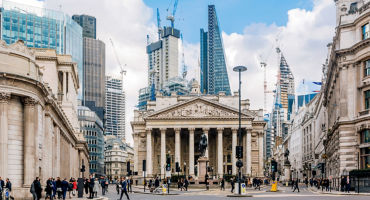The Fed is following, not leading the markets
The Fed hiked rates by 75-basis points (bps) at its July 27, 2022 FOMC meeting, as widely expected. By contrast, the Fed’s 75-bp rate hike in June overshot expectations for a 50-bp increase. However, I would argue that the central bank’s “surprise” move in June actually lagged the latest available US inflation data, as it came after an eye-popping headline Consumer Price Index (CPI) reading of 9.1% and a spike in consumer inflation expectations. The takeaway? Neither the market nor the Fed has a crystal ball but if past is any prologue, it is quite possible that the Fed will continue to follow the markets (based on incoming data), not lead them. But that’s not necessarily bad news for bondholders with longer-term investment horizons.
What’s the case for long-duration, high-quality bonds?
Interestingly, while fed funds rate futures contracts are signaling that the market believes the Fed’s terminal rate for 2022 will be around 3.25%, December 2023 futures contracts are currently trading closer to 2.75%, suggesting a belief that the Fed will reverse course and begin cutting rates by mid-2023 (Figure 1). Optimistic though it may be, if that forecast is indeed correct, it would certainly make a good case for owning US duration — particularly longer-duration, higher-quality bonds. Of course, the market could well be wrong.
But even if the market is wrong, I think the Fed is more likely to hike rates aggressively rather than too timidly. (In the FOMC press conference following the latest 75-bp hike, Fed Chair Powell commented that “doing too little raises the cost if you don't deal with it in the near term.”) In that case, I believe longer-term bond yields will fall as investors foreshadow more meaningful economic slowing in response to Fed tightening. We’ve already seen some early evidence that the US economy is feeling negative impacts from the Fed’s intense focus on “breaking inflation’s back,” even at the expense of growth:
- Rising mortgage rates have helped to cool housing market activity, while many US consumers appear to be reining in their spending.
- More recently, a preliminary US composite Purchasing Managers’ Index for July fell to 47.5 — a reading consistent with recession.
- Plus, the cumulative impact of the unprecedented speed and magnitude of the Fed’s balance-sheet reduction has yet to be determined.
The risk is that the Fed could back off from policy tightening in the face of weak growth, even while high inflation persists. In that case, I think the market would question the Fed’s credibility and signal as much with higher long-term bond yields — not a chance the Fed is willing to take, in my view.

























Monthly Market Review — October 2025
Continue readingBy